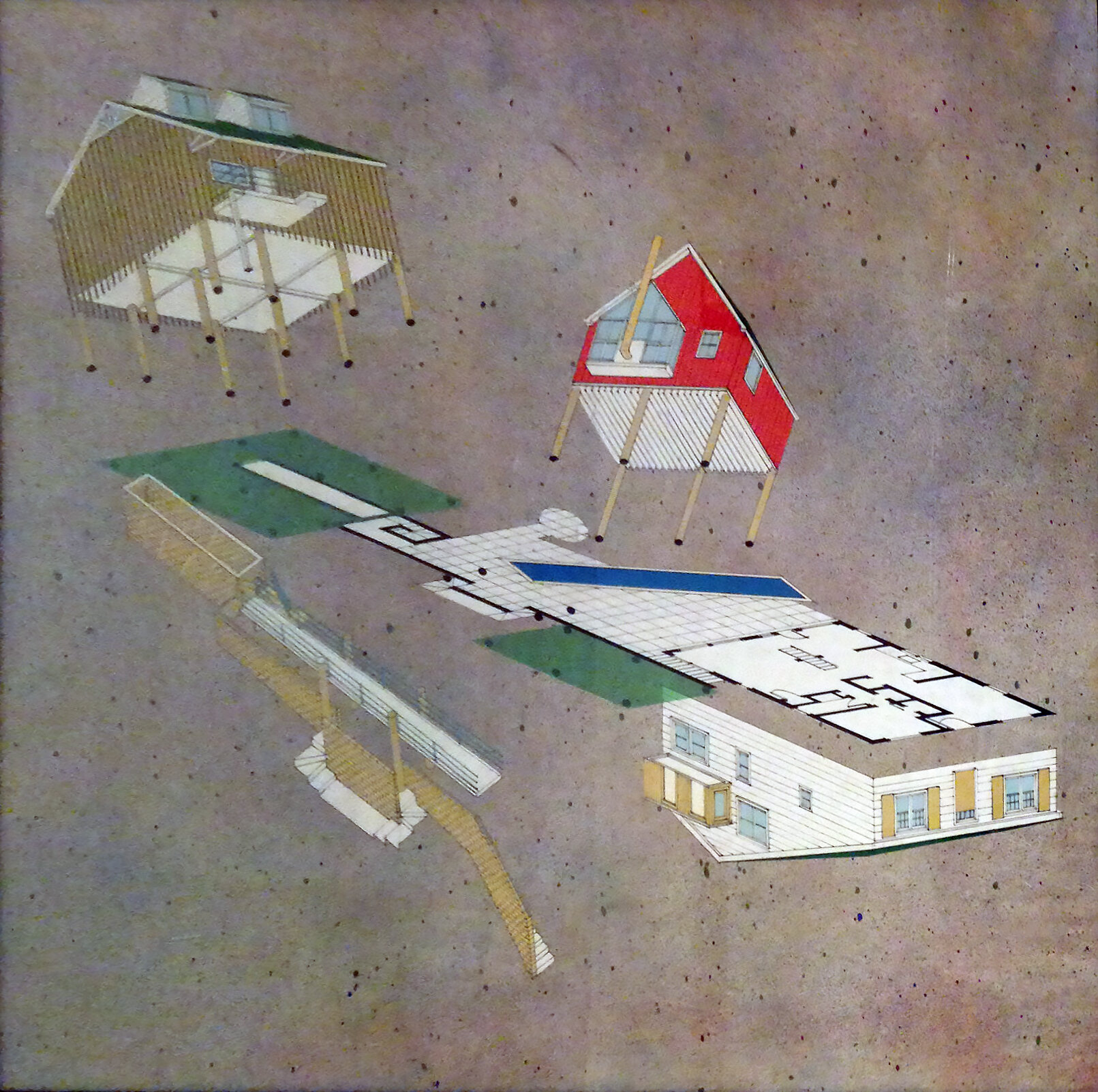Susan Rothenberg, Sag Harbor, and Me…
By Lee H. Skolnick, FAIA, Principal
Anyone who knows a bit about Sag Harbor – beyond the overpriced second-home mecca it has recently become – knows that it has a rich heritage of being the home of many artists, writers, musicians, filmmakers, and other creative types. Melville, Steinbeck, Doctorow, Balanchine, Matta-Clark, Pennebaker – the list is long and distinguished. Although I have been blessed to work with many of their contemporary counterparts, it all started with a little fisherman’s cottage.
It was the early eighties. I had just gotten out of Cooper Union and wound up in Sag Harbor through a series of serendipitous events and had just begun to try to figure out how I would make my way as an architect. Aside from a few fortunate one-time residential and exhibition design opportunities I was basically your man if you needed a porch designed, a bathroom or closet rearranged or, if I got really lucky, a small house renovated or added to. Without significant opportunities, I thought I’d see what it was like to be my own client (and maybe make a few bucks) by buying a cheap house, fixing it up as little as possible, and then re-selling it at a profit. Real estate agent friends showed me a few places and I settled on a tiny, non-descript house that needed work (you could still smell the years of fried bluefish). But it was right across the street from the harbor front and was on a somewhat large lot for the village. I bought it (with a loan) for what now wouldn’t buy you a shed and proceeded to clean it up for next to nothing. Then I turned around and sold it for a miniscule profit and thought I was a real estate developer genius.
The person who bought it was this tiny, chain-smoking, gravelly-voiced, shy woman who I came to learn was an artist. Susan Rothenberg. She wasn’t particularly gregarious and the transaction was decidedly uneventful. But soon after, I got a call saying that she understood that I was an architect, and that she needed some work done on the house: a painting studio, another bedroom, a pool, maybe a new kitchen. Thus began my first ‘serious’ commission, my entrée into the art world, and my first real attention from the design press.
Susan Rothenberg was, by that time, a major presence and leading light in the pantheon of contemporary artists. As everyone knows, her ‘horse paintings’ were part of the resurgence of the medium, and her blending of figuration, abstraction, movement, and super-bold symbols and iconography were historic. And as a woman in the still-good-old-bad-boy, go-go downtown NYC art scene, she was a tough character who simply wouldn’t yield to any of that shit. She and several other female dynamos of the time were either going to blow the clubhouse down or just ignore it and keep on blazing their own trails.
What I found in working with Susan was that both conventions and high concept held no interest whatsoever for her. She just wanted a place conducive to her life and work styles. So that’s what we did. We literally created a narrative of what a day in the life of Susan Rothenberg would be like and designed a home and studio that would not just reflect or be inspired by it, but actually embody it. She could get up in the morning in her raised bungalow-like bedroom, not have to see anyone, walk across a bridge to her studio, do some work, descend into the courtyard and swim in the lap pool, and when she was ready, walk into the kitchen and greet her daughter Maggie and anyone else who might be around. That was the program and that was the design.
Axonometric drawing of Rothenberg’s home and studio by Lee Skolnick
We played around with stained plywood floors, nautical pipe railings, old Bakelite cabinet handles, and an interior color scheme that was anything but fashionable. The house could only be for her; it was OF her. What we did, together, was to translate her life into architecture. So, I learned early on that every project had to find its own voice, and that working with (not just for) artists would always be an adventure in creative collaboration. This critical lesson has informed my approach to every project ever since.
Rothenberg’s Sag Harbor home and studio
Rothenberg’s home
We went on to renovate Susan’s loft in TriBeCa, remained friends, and she introduced me to other artists, gallerists, collectors, and museum people. More commissions came; great opportunities that grew in scale and gradually expanded my reputation.
But it all started with Susan. To have the opportunity to work with her, and to get a window into her creative mind and her continuing development as an artist was inspirational and edifying. I always noticed that her work was at its most raw and compelling when she was unattached romantically and somewhat unhappy. Somehow, the nervous energy and anxiety sharpened her expression. Then she would get a new beau and you could see that as she became giddily happy her work would lose some of its edge. Until one day she got together with the artist, Bruce Nauman, moved to New Mexico, finally began riding horses instead of just painting them, and she was able to be happy and do great paintings. And we never saw each other again.
Susan Rothenberg was fierce and meek, confident and fragile, kind to many but not always to herself. But this small person was a monumentally gifted artist and I was privileged to know and work with her during a formative chapter in her life and career.




